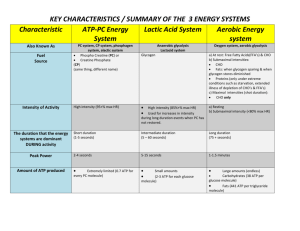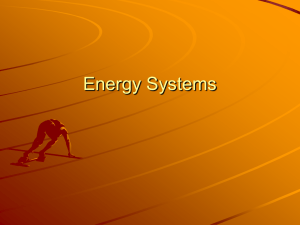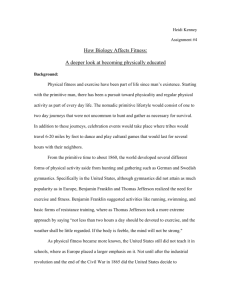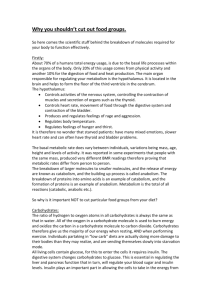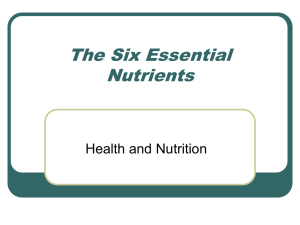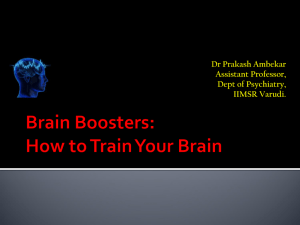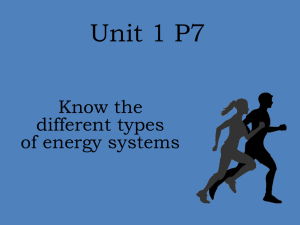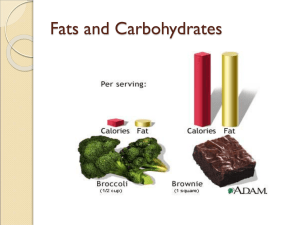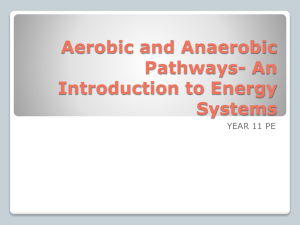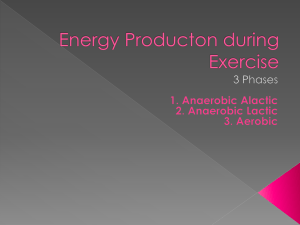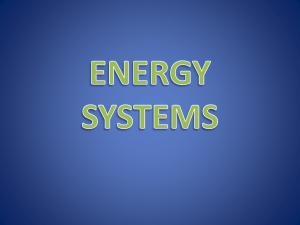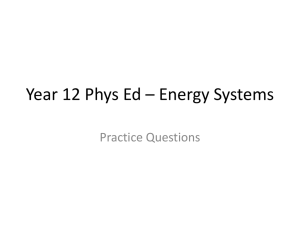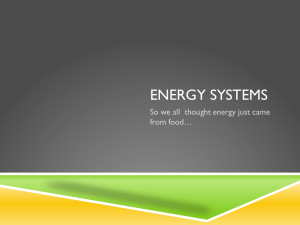Chapter 5 Food fuels and the three energy systems
advertisement
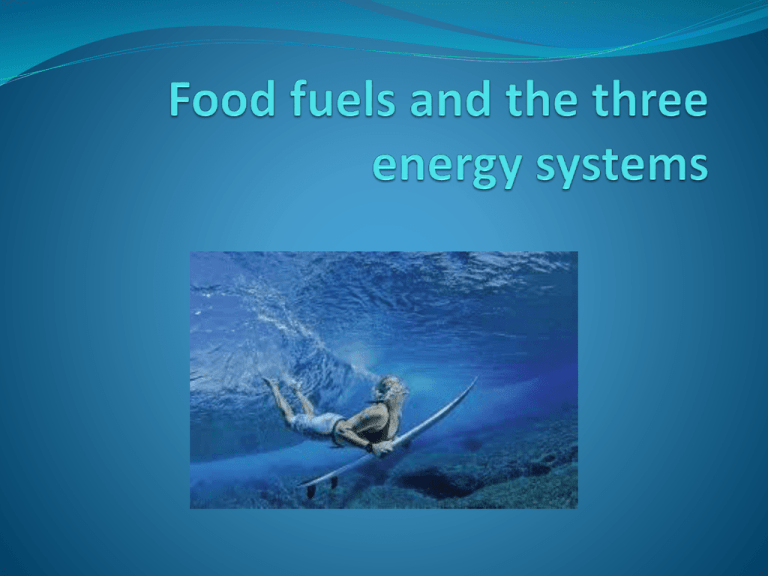
Key knowledge Chapter preview Food fuels CHO – carbohydrates are the body’s preferred fuel source, particularly during exercise. Fats – concentrated fuel storage in the muscles and adipose tissue, main source of fuel at rest and in prolonged sub maximal exercise. Protein – make a small contribution during energy production, mainly used for growth and repair. Foods as energy sources ATP = energy Adenosine triphosphate is the major source of energy that keeps every cell in the body going, including muscles. ATP is a chemical fuel source. Energy is released when one of the phosphates splits off, leaving ADP and an inorganic phosphate Pi. Only a very small amount of ATP exists at the muscles, around 2 seconds worth. ATP must therefore be continually rebuilt or resynthesised so that energy can be provided for longer periods. ATP = energy To resynthesise ATP to create more energy in a form muscles can use, energy from the breakdown of phosphocreatine or nutrients(glucose, free fatty acids and amino acids) is used to rejoin ADP and Pi. Fuel sources for physical activity Glycogen is the body’s preferred source of energy for exercise. At rest however, the body has a clear preference for fats as food fuel over CHO. Carbohydrates, fats and protein Fuel Carbohydrates Fats (triglycerides) Proteins Phosphocreatine Source Converted to Stored Carbohydrates (CHOs) It is important to have a carbohydrate rich diet in order to increase glycogen stores. CHOs are preferred to fats as a source of energy during exercise because they require less O2 to produce the same amount of energy. CHO loading Fats Fats are stored in the form of triglycerides in adipose tissue and skeletal muscle. Triglycerides are broken down into free fatty acids which are then broken down aerobically for energy. Fats become important during prolonged sub maximal exercise, when glycogen levels are depleted. Protein Protein is important in any diet as it provides the building blocks of all tissue. Protein is not normally used as any energy source, it requires large amount of oxygen to break down for energy use. In extreme situations, when the body has depleted glycogen and triglycerides, the body may resort to using protein as an energy source. Glycaemic Index An index which ranks foods on a scale of 1 to 100 according to how much they will raise blood glucose over a two hour period. For example: - Low GI: apple 38 - Medium GI: white rice 64 - High GI: honey 83 Energy availability and oxygen cost Food fuel Carbohydrates Fats Protein Maximum energy (ATP per molecule) Oxygen required (litres per mole of ATP produced)

